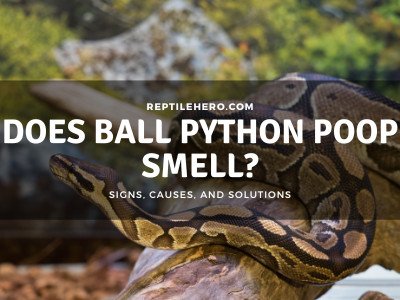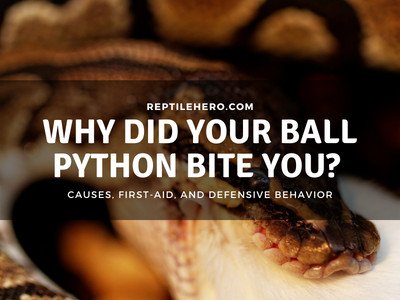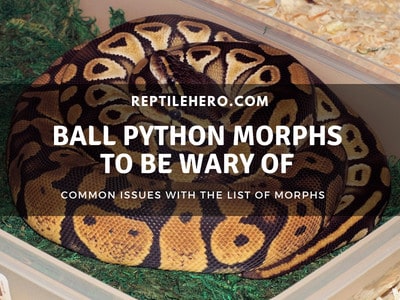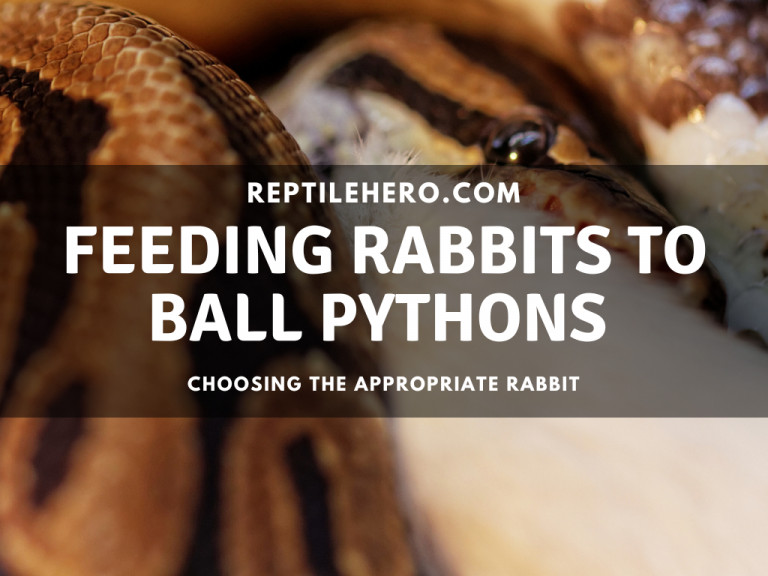Can a Ball Python Eat a Cat?
Are you a cat owner looking to get a ball python? Are you worried that a scaly pet might eat your furry friend? Is there anything bad that might happen to them if they live in the same house? Regardless of whether it is a mammal or reptile, all pets should equally be given proper care.
An adult ball python cannot eat a fully grown house cat due to its large size and effective defenses. However, an adult ball python can eat a kitten if given the chance. In most cases, it is the ball python is at higher risk than a cat in case the two pets meet. The encounter of the two should be avoided.
Both ball pythons and cats have a mostly protein-based diet. But can hurt or kill each other? How can you ensure the safety of both animals if they live in the same house? Find out these essential tips as you read until the end!
Can Cats Get Preyed on by Ball Pythons?
Cats and ball pythons are natural enemies and can both prey on each other in most circumstances, they will not get along with each other. However, some keepers share stories of their cats and ball pythons seemingly becoming “friends.”
At reptile hero, we strongly discourage letting your cat and python interact. Despite some positive stories in the community, these are most of the time rare cases in specific and controlled circumstances. Do not risk the life of your python in trying.
Yes, a ball python and a cat may be able to tolerate each other in rare cases. However, it is still highly discouraged to let them interact with each other as injuries can happen pretty quickly.
A cat can bite and scratch a ball python in quick succession and the same can be said about a ball python’s strike.
As a ball python keeper, I also live with 3 dogs. So when I tried to show them my ball python, Choco—at a distance, of course—he tried to strike at the dogs.
I assume that because of his poor eyesight and sensing an unfamiliar smell and heat signature, Choco reacted with a defensive strike.
So I recommend keeping your ball pythons and house pets away from each other. More importantly, never let them stay near each other especially when your ball python is out of its enclosure.
>>Learn more about dos and don’ts in cohabitating a ball python with other animals in our article can leopard geckos cohabitate with a ball python
3 Risks of Having a Cat and Ball Python in the Same House
The possible risks that come with having a cat and a ball python living in the same house include 1) sustaining injuries, 2) electrical issues, and 3) parasitic transmission.
1. Injuries
A cat can indeed injure a ball python and vice versa. However, the python is at more risk as the cat can use its larger fangs and sharp claws to inflict serious damage on the snake.

So if you have a cat in the same house with a ball python, it is highly discouraged to let them interact with each other. A bite from a ball python is less dangerous than what a cat can do to it.
Domesticated cats are excellent predators and an invasive species that has made many endemic animals extinct. Equipped with sharp fangs and claws, a cat can harm and kill a ball python if it chooses to.
Ball pythons cannot kill a cat. The most a ball python can do is inflict a bite that cannot be fatal if treated properly. The only snakes that are a real threat to cats are larger pythons and venomous ones.
If there is an altercation between a ball python and a cat, immediately disinfect their wounds. Resulting injuries can get infected with the bacteria coming from both animals’ mouths and the cat’s claws.
For first aid, let the ball python soak in a diluted povidone-iodine solution. The cat’s wounds can also be treated with iodine. After this, it is recommended to go to the nearest veterinary clinic for further treatment.
2. Electrical Issues
A cat can scratch, chew, and destroy electrical cords and wirings which can cause malfunctions and fire hazards. Ball pythons are kept with a heater that may malfunction if tampered with by a cat.
Ball pythons are prone to overheating if the temperature goes higher than 92°F for extended periods. They can also experience respiratory infections at temperatures lower than 70°F.
These problems are typically encountered by keepers with a malfunctioning heating device.
Some ball python keepers shared instances where their cats chew and scratch the wirings connected to their heating device which caused a malfunction. Luckily, more often than not were no animals injured and such issues were resolved immediately.
3. Parasitic Transmissions
In a rare occurrences, cats can possibly transmit parasites such as snake mites. These affect thousands of ball pythons yearly around the world.
Remember that snake mites are transmitted to a ball python through bedding, other animals, and even through human contact. A cat may encounter a couple of snake mites somewhere and can transmit it to a ball python within the vicinity.
Common ways to remove snake mites include soaking, using the Provent-A-Mite spray, and washing with gentle dish soap.
>>Learn more about snake mites in our article on why a ball python rubs its face.
4 Safety Tips for Keeping a Ball Python With Other House Pets
When keeping a ball python with other house pets, it is important to practice precautions. Some safety measures are: 1) room designation, 2) sturdy shelvings, 3) reinforcing screens, and 4) secure wirings.
1. Room Designation
The best way to prevent accidents from happening between a ball python and a house pet, like a cat, is to designate a reptile room. Most keepers designate a snake room for ball pythons because they do not need to roam most of the time like cats and dogs.
With a separate room, a cat or dog cannot tamper or even damage the enclosure and heating devices. Even if a ball python escapes, there is no chance a cat or other house pets can harm it if the room itself is secured.
A designated snake room can also prevent a ball python from escaping far from its enclosure. As long as no holes are leading outside the space, you can easily find a ball python that has escaped within the room.
>>Learn more on what to do if a ball python escapes in our article is your ball python trying to escape?
2. Sturdy Shelvings
A well-built and sturdy shelving unit is needed for a ball python enclosure if a cat or other pet is also kept in the house. It is recommended to upgrade low-quality shelves and racks to lessen the chance of accidents and damages.
If you are placing your enclosure on an unstable shelf or rack, it can easily be knocked over by a house pet, especially large ones. This can cause accidents and injuries to the animals–even more so with enclosures made out of glass.
Even a cat can make a shelving tumble by jumping on top and making it unbalanced. There are many keepers sharing stories of their cats bumping onto an enclosure and making it fall.
So if the shelves for ball python enclosures wobble even just a bit, it‘s a sign for you to upgrade to a new and more stable one.
In other cases, the floor may not be leveled enough so the legs of the shelving rack will require adjustments.
3. Reinforcing Screens
Screen-top enclosures must be reinforced, especially if there are cats or other house pets that are able to climb on top. A cat might be able to break through the thin screen upon landing on top of the python enclosure.
If you have a side opening enclosure with a screen top, you can modify it to have additional aluminum or steel reinforcement just like the picture shown below.

However, if you have an enclosure that opens through its screen-top, I recommend making a screen protector. It can be made simply by cutting out a piece of cardboard that fits the top of your tank. Just keep in mind to leave cutouts where the heat lamps will be placed on.
4. Securing Wirings
Secured wirings are a must if house pets, like a cat or dog, can reach and tamper with the cords of the electrical components of a ball python enclosure. A damaged cord can cause malfunctions and start a fire that can harm both the ball python and the other pet.
You can secure the wires by using flex tubing to encase the cords. This will keep it protected despite attempts of chewing or scratching from other pets.
After it is encased, you can secure the protected wires to the shelving unit with cable clips or zip ties to keep it neat and prevent it from dangling around.
Further Questions
Can you keep a ball python and a cat in the same room?
A cat and ball python can be kept in the same room as long as the python’s set-up is built to withstand possible tampering from the cat. But both animals should never be allowed to directly interact with each other without supervision.
Do cats eat snakes in the wild?
Cats can eat snakes, especially smaller ones. They are known to prey on a wide variety of animals ranging from small mammals, birds, and reptiles.
Summary of Can a Ball Python Eat a Cat
A ball python cannot eat an adult cat but it can eat a kitten since they are much smaller. If ever there is an altercation between them, a ball python is at a lot more risk due to the cat having quick reflexes and sharp claws and teeth.
There are possible risks when a cat and a ball python are in the same house. Injuries, electrical damage, and possible parasitic transmission are all possible. Although they can safely live in the same house if the following are provided: room designation, tough shelvings, reinforced screens, and secured wirings.
A cat and ball pythons cannot be friends but there are rare scenarios where they show tolerance to each other. This is an uncommon circumstance and should not be expected. Moreover, there are no benefits to letting them “bond.” only huge risks to both animals.
Sources
[2] http://denardo.lab.asu.edu/publications/ARAVsnakemites.pdf






